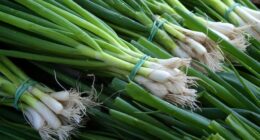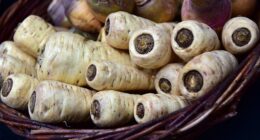Swedes, also known as rutabagas in some parts of the world, are larger in size with a yellowish-orange flesh and a sweeter taste compared to turnips. Turnips are smaller with white flesh and a more peppery flavor.
What are Swedes?
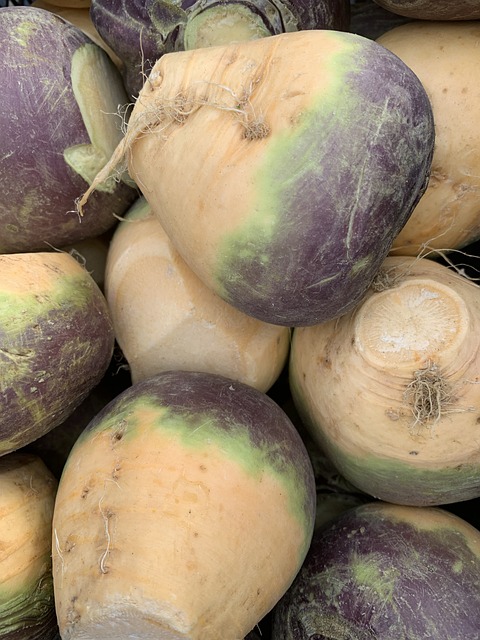
Swedes, also known as rutabagas or Swedish turnips, are a root vegetable that originated in Sweden (hence the name). They belong to the Brassicaceae family and are a cross between cabbage and turnip. With their vibrant purple-green exterior and orange-yellow flesh, swedes make quite an impression on both our plates and taste buds.
One of the things that sets swedes apart is their size – they tend to be larger than turnips. They have a firm texture when raw but soften beautifully when cooked, making them perfect for soups, stews, roasted dishes, mashes, or even as a standalone side dish. Swedes possess a slightly sweet yet earthy flavor with hints of nuttiness.
Rich in vitamins C and K, as well as fiber and antioxidants like beta-carotene, they offer numerous health benefits such as boosting immunity and promoting healthy digestion. Plus, their low calorie content makes them an excellent choice for those watching their waistlines.
In culinary terms, swedes are incredibly versatile. You can slice or dice them for salads or slaws; puree them into silky soups; mash them with butter for a comforting side dish; roast them alongside other vegetables for added depth of flavor; or even spiralize them into noodles as a healthier alternative to pasta.
What are Turnips?
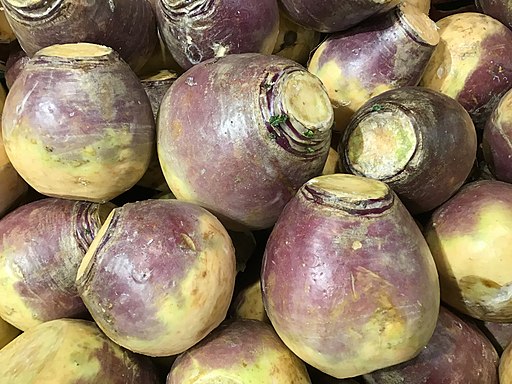
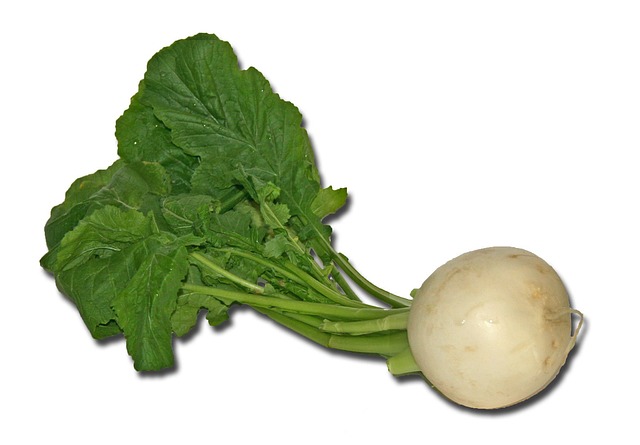
Turnips are root vegetables that belong to the Brassica family, which also includes cabbage and broccoli. They have been cultivated for thousands of years and are known for their distinctive flavor and versatility in cooking.
One of the key features of turnips is their bulbous shape, with a round or slightly flattened appearance. They typically have a white or cream-colored skin, although some varieties may be purple or yellow. The flesh of turnips can range from creamy white to pale yellow, depending on the specific variety.
In terms of taste, turnips offer a unique blend of sweetness and earthiness. When raw, they have a slightly peppery flavor with a crisp texture. However, when cooked, turnips become tender and develop a milder taste that pairs well with various dishes.
Turnips are highly nutritious as they contain essential vitamins like vitamin C, vitamin K, folate, and minerals such as potassium and manganese. Additionally, they are low in calories but high in fiber content.
Due to their versatility in the kitchen, turnips can be enjoyed in numerous ways – roasted as a side dish alongside other vegetables or meats; mashed into purees; boiled and added to soups or stews; pickled for tangy flavors; grated into salads for extra crunch; or even used as an alternative to potatoes in recipes like gratins.
Swedes Vs. Turnips – Key differences
| Characteristic | Swedes (Rutabagas) | Turnips |
|---|---|---|
| Scientific Name | Brassica napus subsp. napobrassica | Brassica rapa subsp. rapa |
| Common Name | Swede, Rutabaga | Turnip |
| Size | Larger and more bulbous | Smaller and rounder |
| Skin Color | Purple or brownish skin | White, red, or purple skin |
| Flesh Color | Yellow-orange flesh | White or white with purple top |
| Taste | Slightly sweet and earthy | Slightly peppery and crisp |
| Nutritional Value | Higher in calories and carbohydrates | Lower in calories and carbohydrates |
| Cooking Uses | Common in stews, soups, and mashed dishes | Often used in salads, pickles, and roasts |
| Culinary Characteristics | More suitable for long cooking times | Great for quick cooking and salads |
| Growing Conditions | Requires a longer growing season | Grows quickly and can be harvested in a few months |
| Hardiness | More cold-resistant | Less cold-resistant |
| Storage | Stores well through the winter | Best used fresh and does not store as long |
| Availability | More common in northern regions | Widely available in various climates |
| Uses in Cuisines | Popular in Scandinavian and British cuisine | Used in various international cuisines |
| Primary Dishes | Lutefisk and mashed rutabaga | Turnip greens, turnip soup, and pickled turnips |
Image Credits
Featured Image By – Mike Mozart, CC BY 2.0 , via Wikimedia Commons
Image 1 By – shaymen99 from Pixabay
Image 2 By – Lebensmittelfotos from Pixabay

